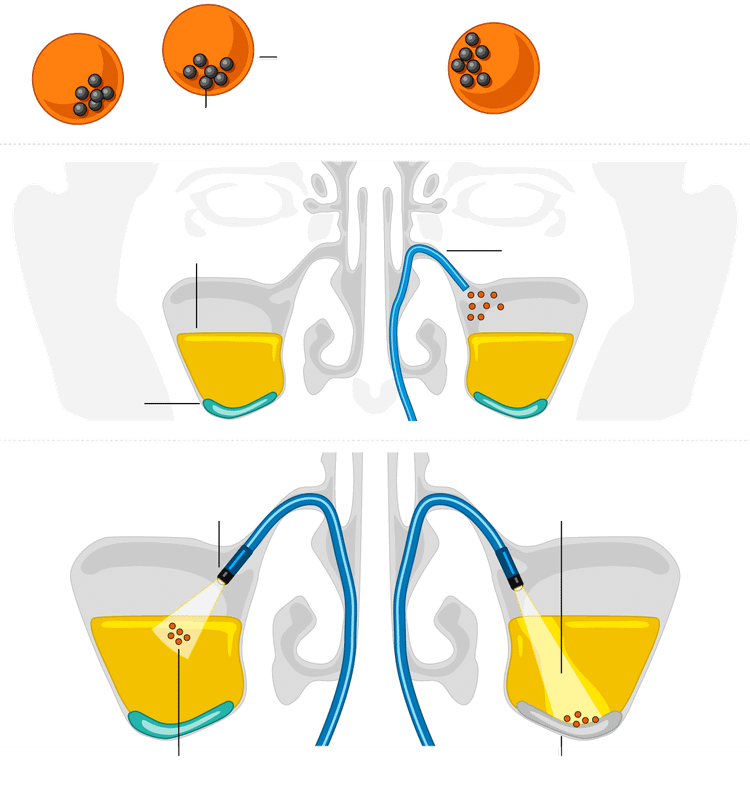A microrobot just a few micrometers in size has been successfully tested in treating sinusitis by moving into the nasal cavity, destroying bacteria and then exiting the body. This is a new treatment direction, without using antibiotics, without surgery, changing the approach to respiratory diseases in the near future.

The microrobot is made of magnetically responsive materials and can interact with light. After being inserted into the sinus cavity through a catheter inserted through the nose, the device will be guided by an externally controlled magnetic field. When reaching the correct location of inflammation, light from the micro-optical fiber will activate the microrobot to generate heat and create active oxygen radicals, helping to break down the thick layer of pus and destroy bacteria precisely, without affecting the surrounding healthy tissue.
The entire treatment process takes place within a few tens of minutes. After completing the task, the microrobots will automatically exit the nose along with the secretions, without the need for retrieval. The process does not cause tissue damage and no inflammatory reactions are recorded after treatment.
The results showed that the bacterial removal efficiency was over 99% after just one intervention. Tests on pig and rabbit models showed that sinus tissue recovered well, without signs of necrosis or fibrosis. This new method will gradually replace traditional methods such as long-term antibiotic use or endoscopic surgery.
The special feature of the device lies in its ability to coordinate in groups. The microrobots operate as a swarm, which can be evenly distributed in the infected environment to optimize cleaning efficiency. This design helps save energy, avoid mechanical collisions in narrow chambers and ensure stability during operation. The steering force from outside the body combined with endoscopic light signals helps to precisely control each movement.
In addition to efficiency, safety is also a top priority. The microrobot uses biodegradable materials that do not leave long-term residues. All operations from insertion, guidance to reaction activation are controlled in a closed environment. X-ray image monitoring data allows continuous assessment of the robot's position and condition during treatment.
Beyond sinusitis, this technology is being extended to treat infections in complex structures such as the bladder, intestines, or areas around implanted medical devices. Eliminating bacteria locally with bioreactors significantly reduces the need for systemic medications and minimizes the risk of antibiotic resistance – an increasingly common problem in modern medicine.
Micro-robot technology for treating sinusitis is still in the preclinical stage. However, with positive experimental results and minimal intervention, this is considered a potential direction in the field of precision medicine. Human trials may be deployed in the next few years after meeting the requirements of safety and manufacturing standards.
The trend of using microscopic medical devices that can be controlled in the body is growing strongly worldwide. Micro-robots are being studied to become new treatment tools in cases of chronic infections, deep infections or situations that are difficult to access with traditional techniques. With the ability to impact the right place, in a short time, with a non-pharmaceutical mechanism, micro-robots are reshaping the way of treating diseases in a less invasive, faster, neater and more precise way than ever before.
Source: https://khoahocdoisong.vn/ung-dung-vi-robot-trong-xu-ly-viem-xoang-bang-cong-nghe-cao-post1551942.html


































































































Comment (0)